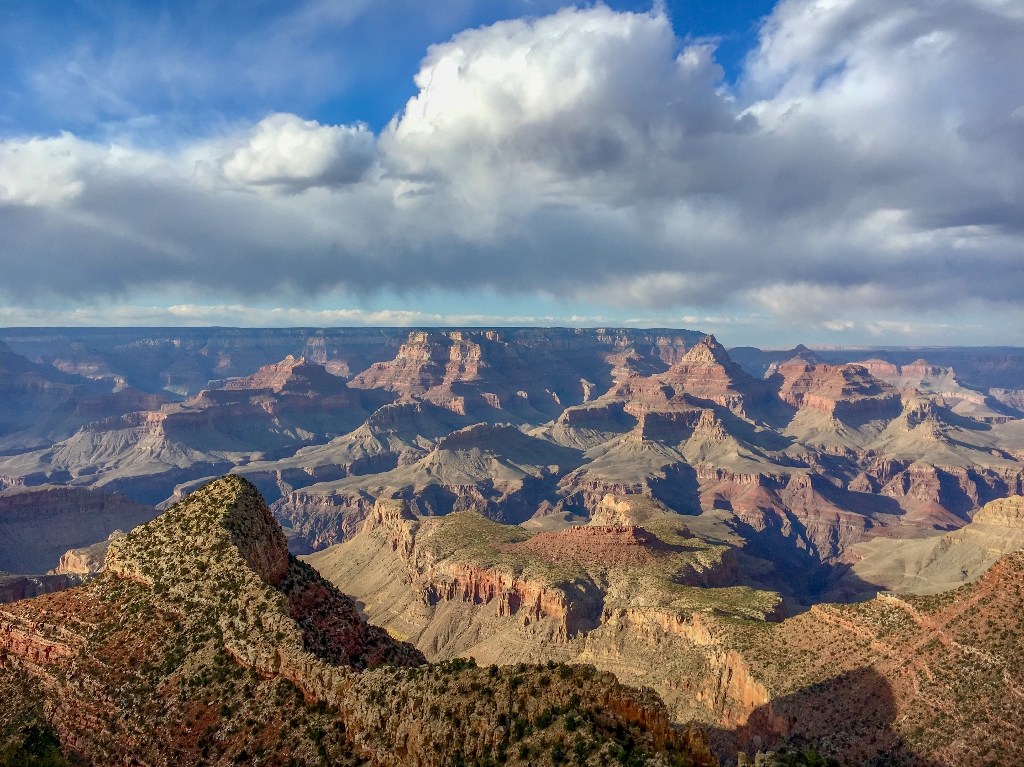
This popular viewpoint offers panoramic views of Grand Canyon from east to west, including several bends of the Colorado River to the east.
The historic Grandview Trail begins here. This trail is incredibly steep! In summer, much of the trail is in full sun. In winter, ice and snow make hiking treacherous. Always use caution on the Grandview Trail and consult a park ranger at one of the visitor centers or the Backcountry Information Center for the latest weather and trail conditions.
On the road to Grandview Point, you may notice a shift from pinyon-juniper woodlands to ponderosa pine forests. Ponderosa pine typically grows at higher altitudes than pinyon-juniper, where the weather is cooler and slightly wetter. The area around Grandview point is slightly higher than the areas east or west of it and even this slight difference in elevation is enough to increase the amount of precipitation the area gets and decrease the overall temperature. These tiny shifts in the environment are enough to impact the plant community in the area, causing the shift to the taller trees and needle covered forest floor. There is even a small grove of aspen trees near Grandview Point, the only ones found anywhere on the South Rim. The area affected is too small to create a totally different environment for the animals of the South Rim, but the forest around Grandview Point is a favorite spot for deer, elk, and mountain lions. If you're really lucky, you might even see one of the canyon's occasional transient black bears.
If you keep your eyes peeled as you travel throughout the park, you'll notice many places where the topography of the canyon can mimic changes in altitude through variations in shade, temperature, and moisture, allowing plants to grow in places where one would not normally expect to find them. These micro-habitats are part of the reason that Grand Canyon is one of the most ecologically diverse national parks in the country.
The Grandview Hotel closed in 1913 after the entire area was sold to California newspaper magnate William Randolf Hearst. Although Hearst long considered developing his own tourism enterprise at Grandview Point, that development never came to pass; he largely used the area as a family retreat, finally dismantling the Grandview Hotel in 1928-1929. Wooden beams from the Grandview Hotel now form the ceiling of the kiva room on the first floor of the Desert View Watchtower. The property was acquired by the National Park Service in 1941.
Is there something we missed for this itinerary?
Itineraries across USA


















































